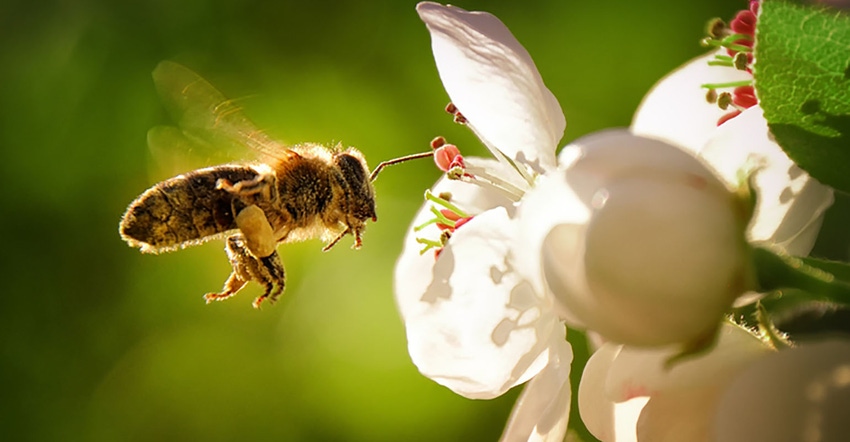February 23, 2021

The Nosema ceranae parasite that causes major problems and death in honey bees works by hijacking its host's iron for itself, according to new research by an Agricultural Research Service entomologist.
Iron is as essential a micronutrient for honey bees as it is for people. Honey bees usually get enough to meet their needs from their flower pollen diet. They use iron in their immune system and for reproduction and development. Nosema ceranae uses iron in the same way.
"In a number of mammal species, there is an iron tug-of-war between host and pathogen that is part of the central battlefield that determines the outcome of an infection. But this has not been explored before in honey bees and not with Nosema," explained entomologist Yan Ping "Judy" Chen. She is with the ARS Bee Research Laboratory in Beltsville, Maryland.
When Chen tracked iron in N. ceranae-infected honey bees, she found iron is also a part of the honey bee's physiological struggle with the parasite, as it is in the mammalian system.
If honey bees lose the battle of infection with N. ceranae, the gut parasite begins to hijack the iron in the flower pollen that the honey bee has eaten before the bee can absorb it, diverting the iron into its own spore reproduction.
How the N. ceranae does that involves a protein called transferrin that, in honey bees, is responsible for binding and transporting iron from pollen out of the gut and throughout the bee. N. ceranae uses the honey bee's transferrin to divert the iron to its own use, causing the honey bee to produce more and more transferrin as the bee's system becomes more and more starved for iron.
"This only results in greater iron deficiency for the honey bee as the increasing transferrin level just gives the N. ceranae the opportunity to scavenge even more iron from the bee host for its own proliferation and survival," Chen said.
She further found that reducing transferrin production was accompanied by reduced iron loss and improved immune function and improving survival of N. ceranae-infected bees.
Since there is no truly effective treatment for N. ceranae, this study suggests a possibility for a new treatment that might be based on regulating iron or the synthesis of transferrin, Chen added.
N. ceranea is one of the major parasite problems causing beekeepers' colony losses today. It is a microsporidia, a member of a group of single-celled parasites closely related to fungi. Originally, N. ceranae was a parasite only of Asian honey bees (Apis cerana). But in the late 1990s, it jumped species to the European honey bees (Apis mellifera) that are in the U.S.
This research was published in Plos Pathogen.
Source: Agricultural Research Service, which is solely responsible for the information provided and is wholly owned by the source. Informa Business Media and all its subsidiaries are not responsible for any of the content contained in this information asset.
Read more about:
PollinationYou May Also Like




